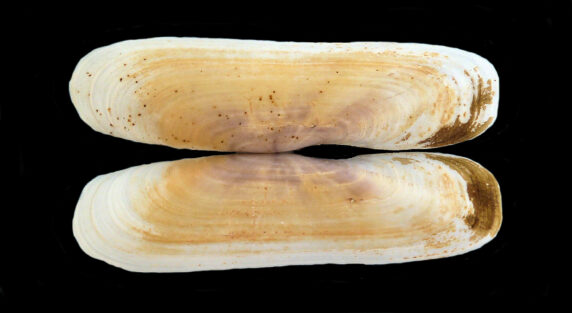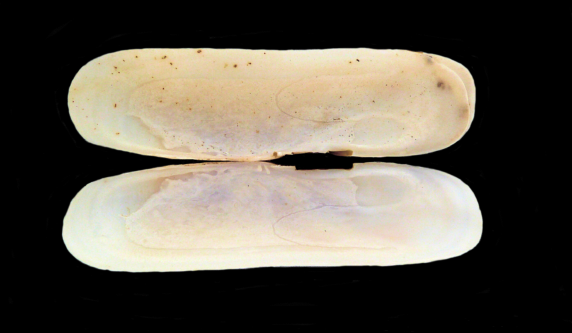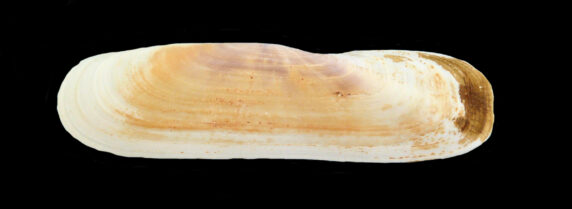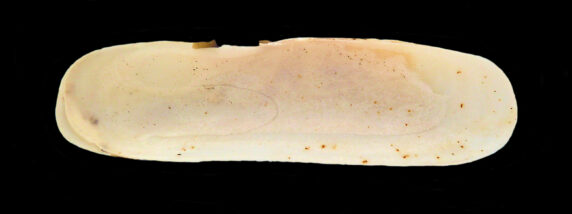California Jackknife Clam Shell, Tagelus californianus



 California Jackknife Clam Shell, Tagelus californianus. Shell collected from within the estuary of the Magdalena Bay complex, Baja California Sur, October 2018. Size: 8.2 cm (3.2 inches) x 2.2 cm (0.9 inches). Identification courtesy of Bob Hillis, Ivins, Utah.
California Jackknife Clam Shell, Tagelus californianus. Shell collected from within the estuary of the Magdalena Bay complex, Baja California Sur, October 2018. Size: 8.2 cm (3.2 inches) x 2.2 cm (0.9 inches). Identification courtesy of Bob Hillis, Ivins, Utah.
The California Jackknife Clam, Tagelus californianus (Conrad, 1837), is a bivalve mollusk that is a member of the Solecurtidae Family of Short Razor Clams, that is also known as the California Tagelus and in Mexico as almeja navaja and tagelo Californiano. The shell is very thin that has a very elongate oval profile, with a central beak and bluntly rounded ends. The exterior is sculpted with very fine concentric lines. The shell has a thick yellowish to dark brown periostracum that is usually worn away except around the ends and margins and a uniform dull white color. The California Jackknife Clam Shell reach a a maximum of 13 cm (5.1 inches) in length and 3.5 cm (1.4 inches) in height.
California Jackknife Clams live buried in sandy mud within protected bays or estuaries. Their burrows are permanent and may be up to 50 cm (20 inches) in depth. The shell can move quickly up and down in its burrow. They are found in the intertidal zone and rarely in water that is greater than 3 m (10 feet) in depth.
The California Jackknife Clams range from Central California to Costa Rica and are found throughout the Sea of Cortez. They are sold commercially and sold for human consumption and for use as a bait in sports fishing.
Synonyms include Solecurtis californianus, Solecurtis violascens, and Tagelus violascens.